Find The Best Flat Roof Replacement Contractors On Roofyng.com
Get A Seamless & Durable Flat Roof Replacement The Easy Way
Discover Other Roofing Services
Roofers
Find trusted roofing companies near you. Get multiple quotes for roof installation, repair, and replacement services.
Residential Roof Installation
Get a new roof installed by experienced professionals. We offer a variety of roofing materials and styles to suit your needs and budget.
Roofing Repair
Comprehensive roof repair services for all types of roofs. We fix leaks, damage, and other roofing issues to keep your property protected.
Full Roof Replacement
Complete roof replacement services for residential and commercial buildings. We remove your old roof and install a new roof with the material of your choice.
EPDM Roofing Contractors
Specialized roofing services for commercial buildings. We handle installation, repair, and replacement for all types of commercial roofs.
Asphalt Shingle Roof Repair
Expert shingle roofers for your home. We specialize in asphalt shingle installation, repair, and replacement, offering a range of shingle types and colors.
Immediate Roof Repair
24/7 emergency roof repair services for urgent situations. We respond quickly to storm damage, leaks, and other roofing emergencies to protect your property.
Roof Leak Repair Companies
Fast and reliable roof leak repair services. We identify and fix the source of leaks to protect your property from water damage.
Tile Roofing Contractor
Expert tile roofing services for your home. We specialize in the installation, repair, and replacement of tile roofs, offering a variety of styles and colors.
Steel Roofing Companies
Durable and stylish steel roof installation services. We offer a variety of metal roofing options, including standing seam and corrugated metal.
Emergency Shingle Roof Repair
Expert shingle roof repair services for your home. We fix leaks, damaged or missing shingles, and other common shingle roofing problems.
Shingle Roof Replacement Estimate
Affordable and efficient shingle roof replacement services. We remove your old shingles and install a new, durable asphalt shingle roof.
Flat Roofing Contractors
Expert flat roof installation and repair services. We work with a variety of flat roofing systems, including TPO, EPDM, and modified bitumen.
Green Roof Installers
Sustainable and eco-friendly green roof installation and maintenance. We create beautiful living roofs that benefit the environment and your property.
Roofers Specializing in Hail Damage
Specialized roofing companies experienced in hail damage repair and replacement. We work with insurance companies to get your roof restored after a hailstorm.
Metal Roof Panel Repair
Professional metal roof repair services for residential and commercial properties. We fix leaks, dents, rust, and other metal roof issues.
Home Roof Inspection
Certified roof inspectors provide thorough roof inspections for insurance claims, pre-purchase evaluations, and maintenance assessments.
Replace Metal Roof
Long-lasting and energy-efficient metal roof replacement services. We install durable steel or metal roofs that enhance your property's value and curb appeal.
Leaky Flashing Repair
Professional roof flashing repair to prevent leaks and water damage. We repair and seal flashing around chimneys, skylights, vents, and other roof penetrations.
Roof Coating for Waterproofing
Professional roof waterproofing services to protect your property from leaks and water damage. We apply high-quality sealants, membranes, and coatings to ensure
EPDM Roof Replacement
Durable and long-lasting rubber roof (EPDM) installation and repair services. Ideal for flat or low-slope roofs on residential and commercial buildings.
TPO Roofing Contractor
Expert TPO roofing services for flat and low-slope roofs. We offer high-quality TPO roof installation, repair, and maintenance for residential and commercial pro
Tile Roof Leak Repair
Specialized tile roof repair services. We fix leaks, replace cracked or broken tiles, and provide other tile roof maintenance to keep your roof in excellent cond
Manufacturing Plant Roofers
Specialized roofing contractors for industrial facilities. We handle large-scale roof installations, repairs, and replacements for factories, warehouses, and oth
Tile Roofing Replacement Services
Beautiful and durable tile roof replacement services. We install high-quality clay or concrete tile roofs, offering a classic and elegant look for your home.
Roof Tarping Services
24/7 emergency roof tarping services to protect your property from further damage. We provide temporary roof covers after storms or other incidents.
Fix Chimney Flashing
Expert chimney flashing repair services to prevent leaks and water damage. We ensure your chimney is properly sealed to protect your home.
Attic Insulation Contractors
Improve your home's energy efficiency and comfort with our roof insulation services. We install and replace attic insulation to reduce energy costs and keep your
Cedar Shake Roof Maintenance
Beautiful and durable cedar shake roofing services. We specialize in cedar shake installation, repair, and replacement, providing a classic and elegant look for
Finding The Right Flat Roof Replacement Contractor Is Easy With Roofyng.com

- Tell Us About Your Project
- Describe your flat roof replacement needs, including the size of your roof, the type of flat roofing system you prefer (EPDM, TPO, BUR, etc.), and any specific requirements you have.
- We Connect You With Local Contractors
- We'll match you with reputable flat roof replacement contractors in your area who specialize in your project type and have experience working on similar properties.
- Compare Quotes & Choose The Best Fit
- Review quotes, compare services, and choose the flat roof replacement contractor who best meets your requirements and budget. We provide you with all the information you need to make an informed decision.
- Get Your Project Started!
- With the right flat roof replacement contractor on board, you can start your roofing project with confidence knowing that you're in good hands.
Why Choose Roofyng.com for Your Flat Roof Replacement?
The smarter way to find Flat Roof Replacement contractors

- Vetted & Trusted Contractors
- We thoroughly vet all flat roof replacement contractors listed in our directory. We verify their licensing, insurance, and track record to ensure they meet our high standards for quality workmanship and customer satisfaction. You can be confident you're choosing from the best flat roofing professionals in the industry.
- Get Competitive Quotes
- Compare prices from multiple flat roof replacement contractors effortlessly. Our platform makes it easy to see your options side-by-side, allowing you to make the most informed decision for your project and budget.
- Save Time & Effort
- Don't waste time endlessly searching for reliable contractors. Let Roofyng.com do the work for you! Submit your project details, and we'll connect you with qualified flat roof replacement specialists in your area, saving you time and effort.
- Wide Range of Flat Roofing Options
- We feature flat roof replacement contractors who specialize in various flat roofing systems, including EPDM, TPO, BUR, PVC, and modified bitumen. Whether you need a roof for a residential, commercial, or industrial building, we can connect you with experts who can help you choose the best system for your needs.
- Customer Support
- Our dedicated customer support team is available to answer your questions and assist you at every stage. We are committed to providing a seamless and satisfactory experience for all our users.
- Free To Use
- Roofyng.com is completely free to use for homeowners, businesses, and property managers. There are no hidden fees or obligations. Start your search for a flat roof replacement contractor today and enjoy the benefits of our platform.
Need a Flat Roof Replacement for Your Business?
Find Commercial Flat Roof Replacement Contractors
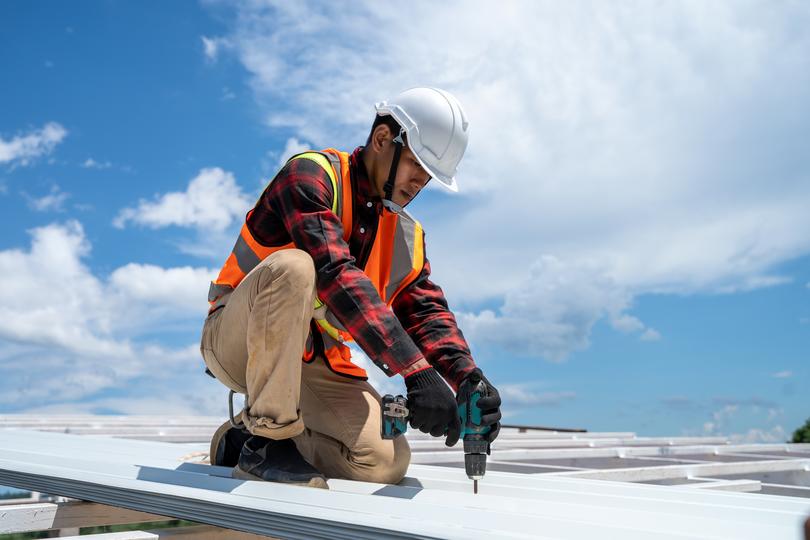
Residential Roofing Companies
Find trusted roofing companies near you. Get multiple quotes for roof installation, repair, and replacement services.
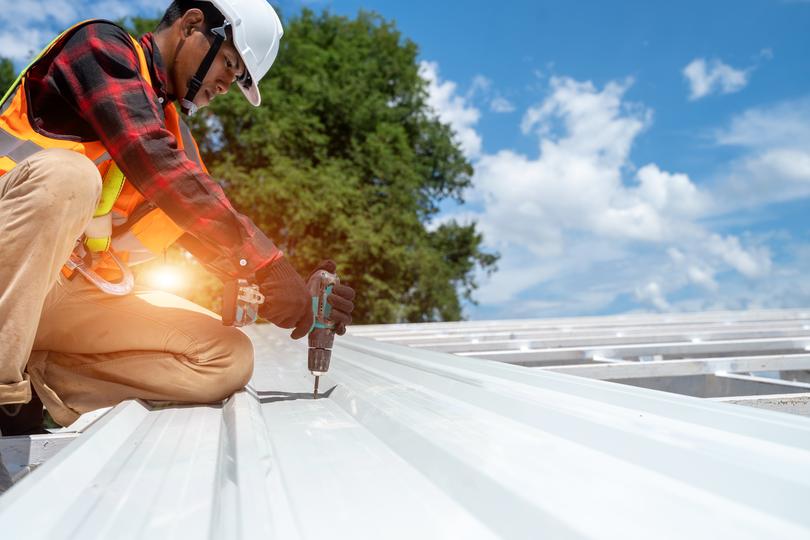
Complete Roof Installation
Get a new roof installed by experienced professionals. We offer a variety of roofing materials and styles to suit your needs and budget.
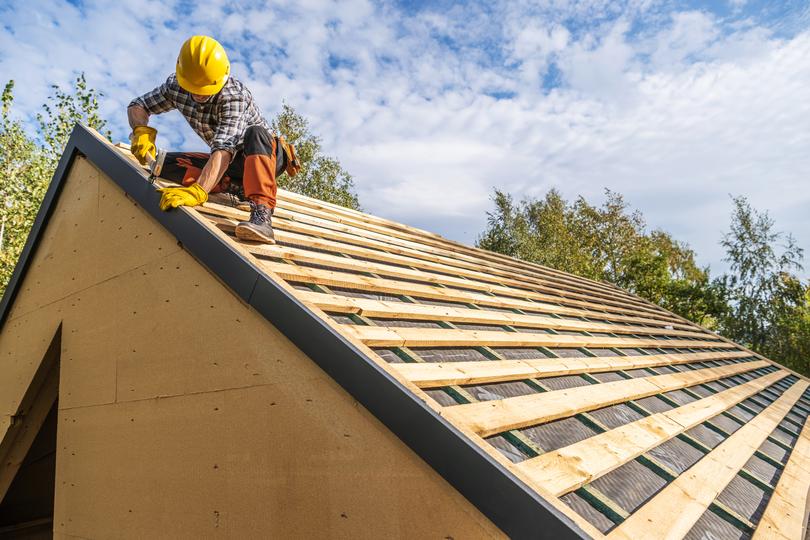
Roofing Repair
Comprehensive roof repair services for all types of roofs. We fix leaks, damage, and other roofing issues to keep your property protected.
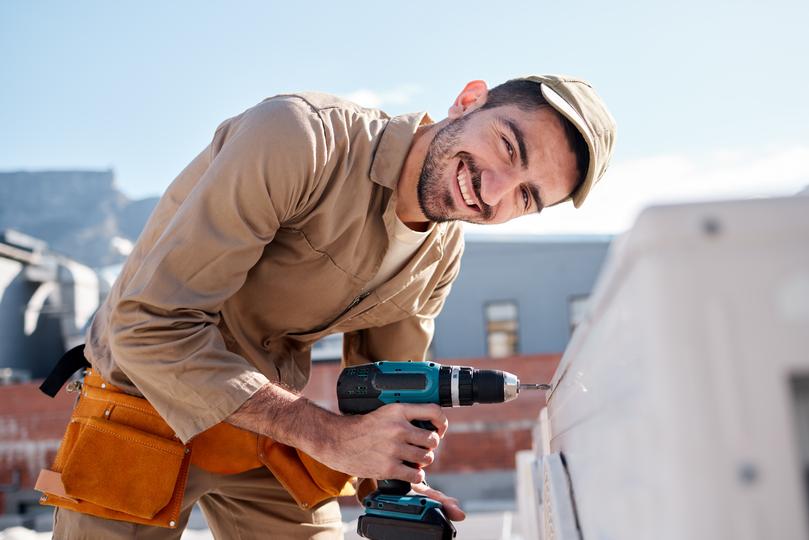
Commercial Roof Replacement
Complete roof replacement services for residential and commercial buildings. We remove your old roof and install a new roof with the material of your choice.
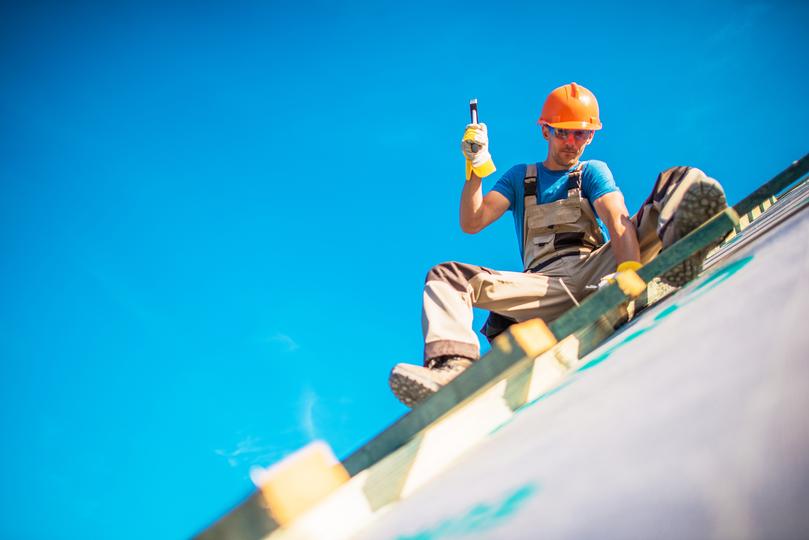
Commercial Roof Repair
Specialized roofing services for commercial buildings. We handle installation, repair, and replacement for all types of commercial roofs.
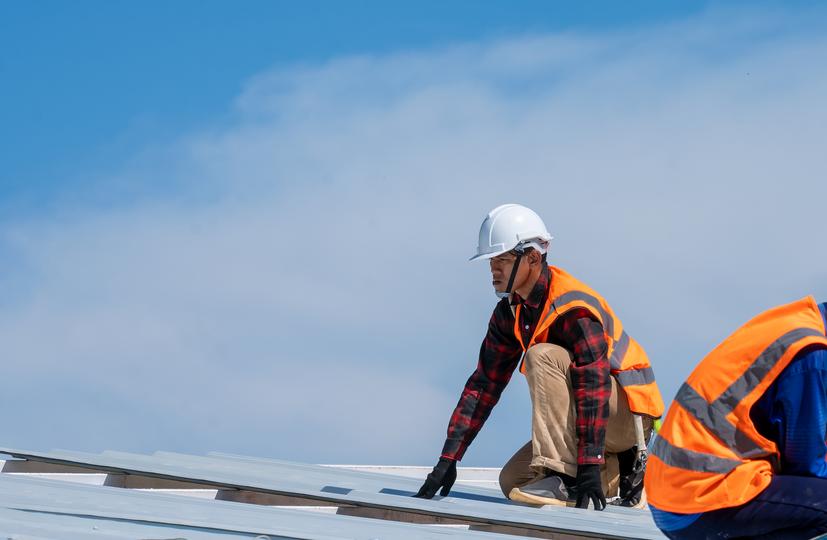
Emergency Roofers Near Me
24/7 emergency roof repair services for urgent situations. We respond quickly to storm damage, leaks, and other roofing emergencies to protect your property.
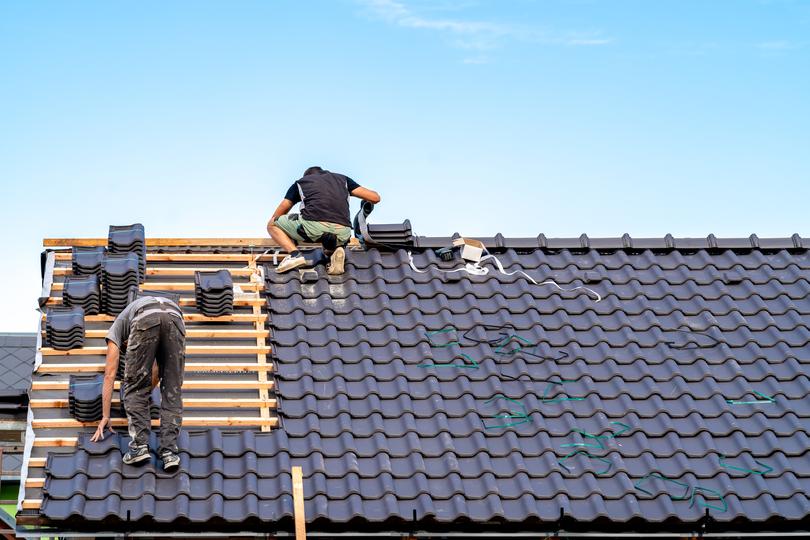
Stop Roof Leaks
Fast and reliable roof leak repair services. We identify and fix the source of leaks to protect your property from water damage.
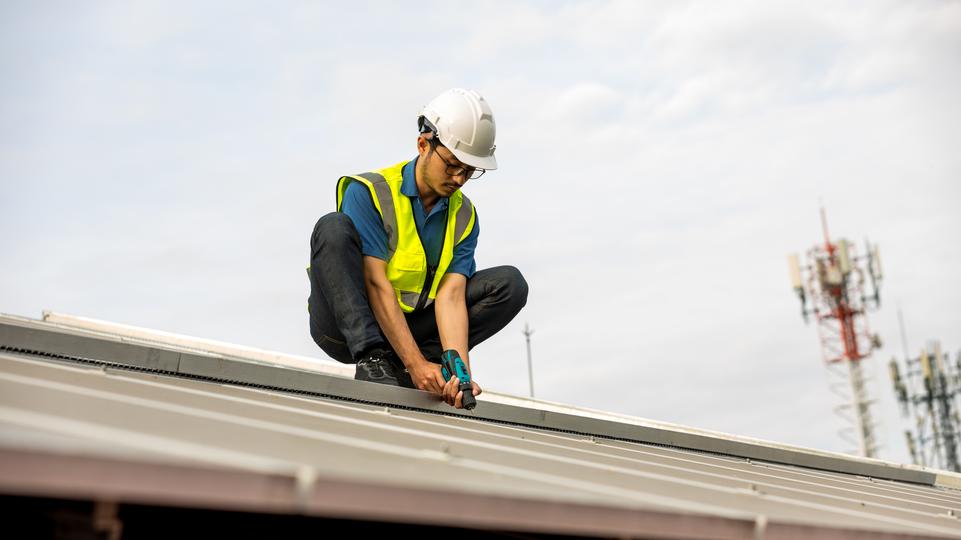
Corrugated Metal Roof Installers
Durable and stylish steel roof installation services. We offer a variety of metal roofing options, including standing seam and corrugated metal.

Commercial Flat Roofers
Expert flat roof installation and repair services. We work with a variety of flat roofing systems, including TPO, EPDM, and modified bitumen.

Green Roof Installation
Sustainable and eco-friendly green roof installation and maintenance. We create beautiful living roofs that benefit the environment and your property.
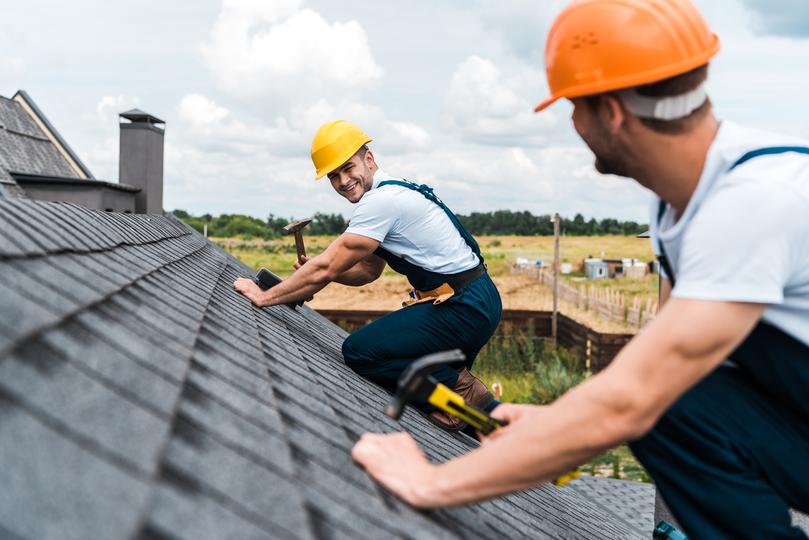
Roofing Companies for Hail Damage
Specialized roofing companies experienced in hail damage repair and replacement. We work with insurance companies to get your roof restored after a hailstorm.
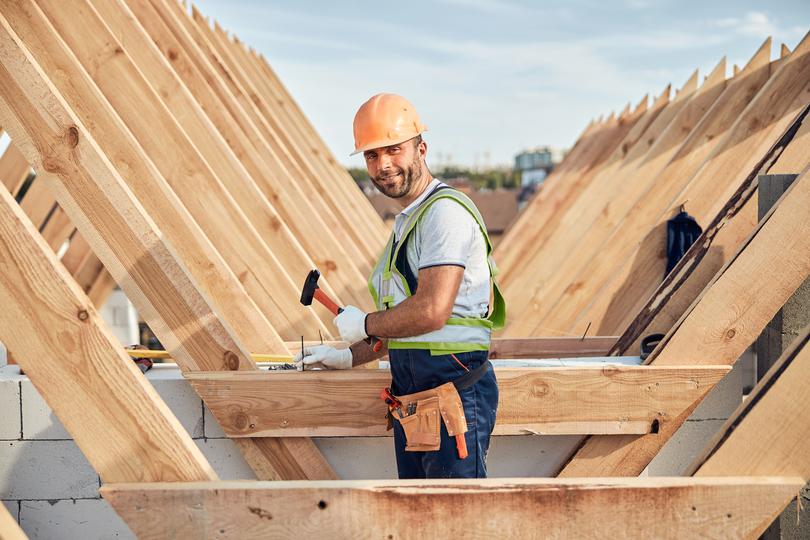
Steel Roof Repairs
Professional metal roof repair services for residential and commercial properties. We fix leaks, dents, rust, and other metal roof issues.
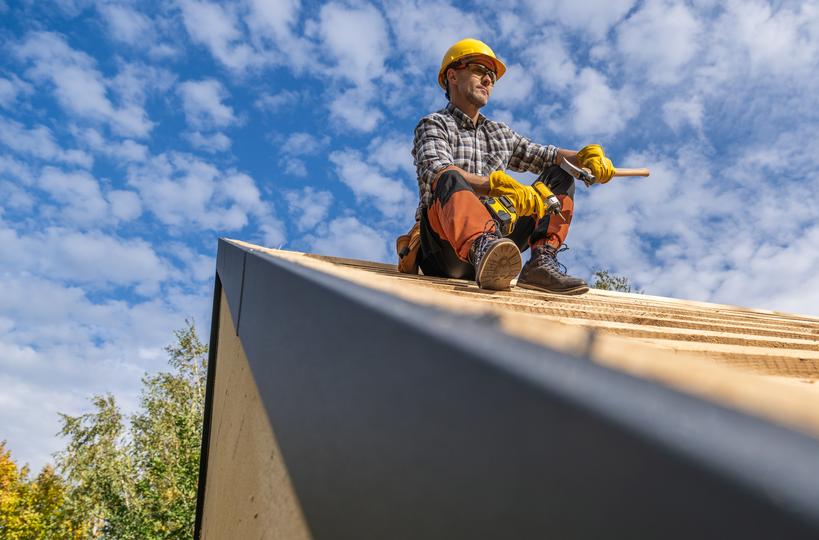
Roof Inspector
Certified roof inspectors provide thorough roof inspections for insurance claims, pre-purchase evaluations, and maintenance assessments.

Metal Roofing Replacement Services
Long-lasting and energy-efficient metal roof replacement services. We install durable steel or metal roofs that enhance your property's value and curb appeal.

Roof Flashing Repair
Professional roof flashing repair to prevent leaks and water damage. We repair and seal flashing around chimneys, skylights, vents, and other roof penetrations.
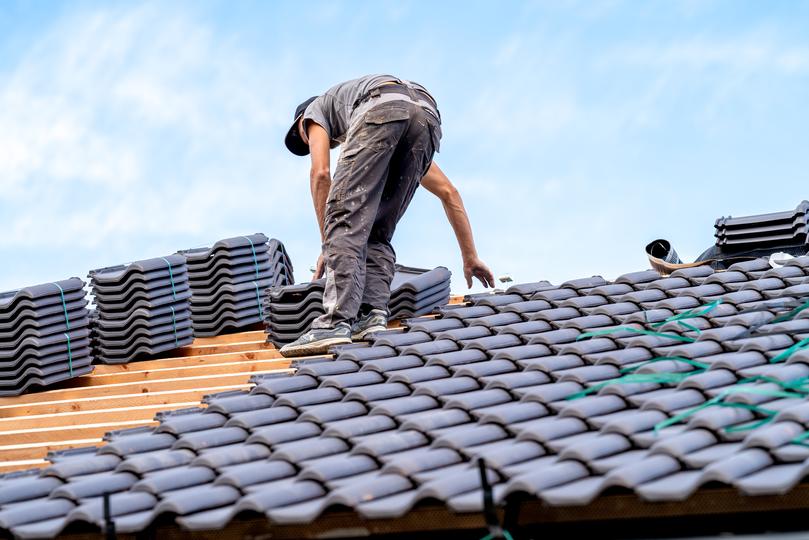
Roof Waterproofing Services
Professional roof waterproofing services to protect your property from leaks and water damage. We apply high-quality sealants, membranes, and coatings to ensure

Rubber Roof Installers
Durable and long-lasting rubber roof (EPDM) installation and repair services. Ideal for flat or low-slope roofs on residential and commercial buildings.

TPO Roofing Contractor
Expert TPO roofing services for flat and low-slope roofs. We offer high-quality TPO roof installation, repair, and maintenance for residential and commercial pro

Manufacturing Plant Roofers
Specialized roofing contractors for industrial facilities. We handle large-scale roof installations, repairs, and replacements for factories, warehouses, and oth

Upgrade Flat Roof Membrane
Reliable flat roof replacement services for residential and commercial properties. We specialize in installing durable and weather-resistant flat roofing systems

Temporary Roof Cover
24/7 emergency roof tarping services to protect your property from further damage. We provide temporary roof covers after storms or other incidents.

Spray Foam Insulation for Roofs
Improve your home's energy efficiency and comfort with our roof insulation services. We install and replace attic insulation to reduce energy costs and keep your
Flat Roof Replacement for Your Home?
Find Residential Flat Roof Replacement Contractors

Residential Roofing Companies
Find trusted roofing companies near you. Get multiple quotes for roof installation, repair, and replacement services.

Get a New Roof
Get a new roof installed by experienced professionals. We offer a variety of roofing materials and styles to suit your needs and budget.

Fix Roof
Comprehensive roof repair services for all types of roofs. We fix leaks, damage, and other roofing issues to keep your property protected.

New Roof Replacement
Complete roof replacement services for residential and commercial buildings. We remove your old roof and install a new roof with the material of your choice.

Shingle Roofing Specialists
Expert shingle roofers for your home. We specialize in asphalt shingle installation, repair, and replacement, offering a range of shingle types and colors.

Emergency Roofing Services
24/7 emergency roof repair services for urgent situations. We respond quickly to storm damage, leaks, and other roofing emergencies to protect your property.

Emergency Roof Leak Repair
Fast and reliable roof leak repair services. We identify and fix the source of leaks to protect your property from water damage.
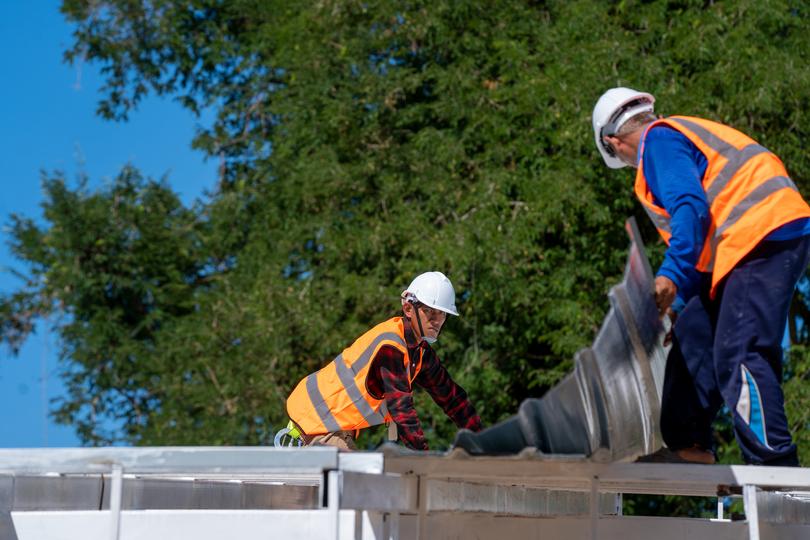
Tile Roofing
Expert tile roofing services for your home. We specialize in the installation, repair, and replacement of tile roofs, offering a variety of styles and colors.

Steel Roof Installation
Durable and stylish steel roof installation services. We offer a variety of metal roofing options, including standing seam and corrugated metal.
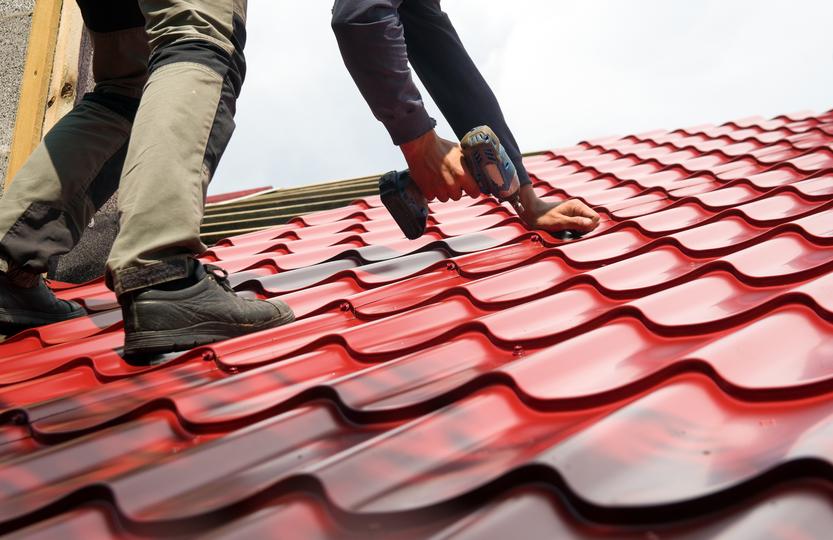
Shingle Roof Repair Near Me
Expert shingle roof repair services for your home. We fix leaks, damaged or missing shingles, and other common shingle roofing problems.

Reroof with Shingles
Affordable and efficient shingle roof replacement services. We remove your old shingles and install a new, durable asphalt shingle roof.

Flat Roof Installers
Expert flat roof installation and repair services. We work with a variety of flat roofing systems, including TPO, EPDM, and modified bitumen.

Sustainable Roofing Contractors
Sustainable and eco-friendly green roof installation and maintenance. We create beautiful living roofs that benefit the environment and your property.

Replace Hail Damaged Roof
Specialized roofing companies experienced in hail damage repair and replacement. We work with insurance companies to get your roof restored after a hailstorm.

Metal Roof Repair Contractors
Professional metal roof repair services for residential and commercial properties. We fix leaks, dents, rust, and other metal roof issues.

Home Roof Inspection
Certified roof inspectors provide thorough roof inspections for insurance claims, pre-purchase evaluations, and maintenance assessments.

Affordable Metal Roof Replacement
Long-lasting and energy-efficient metal roof replacement services. We install durable steel or metal roofs that enhance your property's value and curb appeal.

Emergency Flashing Repair
Professional roof flashing repair to prevent leaks and water damage. We repair and seal flashing around chimneys, skylights, vents, and other roof penetrations.

Roof Membrane Waterproofing
Professional roof waterproofing services to protect your property from leaks and water damage. We apply high-quality sealants, membranes, and coatings to ensure

EPDM Roofing Contractors
Durable and long-lasting rubber roof (EPDM) installation and repair services. Ideal for flat or low-slope roofs on residential and commercial buildings.

TPO Roofing
Expert TPO roofing services for flat and low-slope roofs. We offer high-quality TPO roof installation, repair, and maintenance for residential and commercial pro
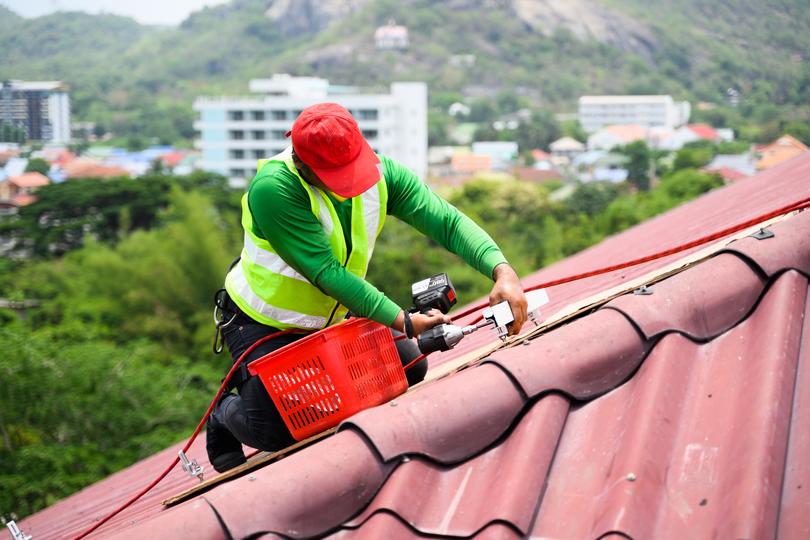
Emergency Tile Roof Repair
Specialized tile roof repair services. We fix leaks, replace cracked or broken tiles, and provide other tile roof maintenance to keep your roof in excellent cond

Affordable Tile Roof Replacement
Beautiful and durable tile roof replacement services. We install high-quality clay or concrete tile roofs, offering a classic and elegant look for your home.

Flat Roof Replacement Companies
Reliable flat roof replacement services for residential and commercial properties. We specialize in installing durable and weather-resistant flat roofing systems

Same Day Roof Tarping
24/7 emergency roof tarping services to protect your property from further damage. We provide temporary roof covers after storms or other incidents.

Emergency Chimney Flashing Repair
Expert chimney flashing repair services to prevent leaks and water damage. We ensure your chimney is properly sealed to protect your home.

Fiberglass Insulation for Roofs
Improve your home's energy efficiency and comfort with our roof insulation services. We install and replace attic insulation to reduce energy costs and keep your

Wood Shake Roof Installation
Beautiful and durable cedar shake roofing services. We specialize in cedar shake installation, repair, and replacement, providing a classic and elegant look for
Ready to Start Your Flat Roof Replacement Project?
Find The Best Flat Roof Replacement Contractors on Roofyng.com!
Flat Roof Replacement Glossary
Built-Up Roofing (BUR)
Modified Bitumen Roofing
Single-Ply Membrane Roofing
EPDM Rubber Roofing
TPO Roofing
PVC Roofing
Roof Deck
Insulation
Vapor Barrier
Flashing
Drainage System
Ponding Water
Tapered Insulation System
Roof Coating
R-Value
Flat Roof Replacement FAQs
How much does a flat roof replacement cost in the USA?
How long does a flat roof replacement take?
What are the signs that my flat roof needs replacing?
- Leaks and water damage: Persistent leaks or signs of water stains on your ceiling are often the first indication of a failing flat roof.
- Blisters or bubbles: Air pockets trapped beneath the roofing membrane can create blisters or bubbles, signaling potential leaks and weak points.
- Cracks and splits: Cracks or splits in the roofing material allow water to penetrate and damage the roof structure.
- Ponding water: If water pools on your flat roof after rainfall, it suggests inadequate drainage, which can lead to premature deterioration.
- Sagging or uneven roof surface: A sagging or uneven roof surface could indicate structural damage to the roof deck or underlying support system.
- Age: Most flat roofs have a lifespan of 15-30 years. As your roof nears the end of its expected lifespan, it becomes more susceptible to problems and may require replacement.
What is the best type of flat roof?
- EPDM (ethylene propylene diene monomer) rubber: Durable, weather-resistant, and cost-effective, EPDM is a popular choice for residential and commercial flat roofs.
- TPO (thermoplastic polyolefin): Energy-efficient, reflective, and resistant to punctures and tears, TPO is a modern and increasingly popular flat roofing material.
- BUR (built-up roofing): Traditional and durable, BUR consists of multiple layers of asphalt-saturated felt or fiberglass, offering excellent waterproofing capabilities.
- PVC (polyvinyl chloride): Highly reflective, durable, and fire-resistant, PVC is suitable for areas with high UV exposure or fire safety concerns.
- Modified bitumen: A blend of asphalt and polymers, modified bitumen offers good durability, flexibility, and resistance to weathering.
How do I choose a reputable flat roof replacement contractor?
- Experience: Look for contractors with a proven track record of successfully completing flat roof replacement projects, especially using the type of roofing system you prefer.
- Licensing and insurance: Verify that the contractor has the necessary licenses and insurance coverage to operate legally and protect you in case of accidents or damages.
- Warranties: Inquire about both manufacturer warranties on the roofing materials and workmanship warranties offered by the contractor. Longer warranties generally signify higher quality and confidence in their work.
- References and reviews: Ask for references from previous clients and check online reviews to understand the contractor's reputation and customer satisfaction.
- Communication and professionalism: Choose a contractor who is responsive, communicates clearly, and provides detailed explanations of the project scope, costs, and timelines.
What is the process of replacing a flat roof?
- Inspection and Assessment: A qualified flat roof contractor will thoroughly inspect your existing roof to evaluate its condition, determine the extent of damage, and discuss your preferences and budget for the replacement.
- Removal of Existing Roofing: Depending on the chosen replacement method, the existing roofing material, insulation, and flashing may be removed and disposed of properly. This step may involve tearing off the old roof or installing the new roof over the existing one (overlay method).
- Roof Deck Preparation: The roof deck is prepared for the new roofing system. This may include cleaning, repairs, or installation of a new roof deck if necessary.
- Insulation Installation: Insulation is installed to improve energy efficiency and thermal performance. The type and thickness of insulation will vary depending on climate conditions and local building codes.
- Vapor Barrier Installation: A vapor barrier is typically installed over the insulation to prevent moisture vapor from reaching the roof deck and causing condensation.
- New Roofing System Installation: The new flat roofing system is installed according to the chosen material and manufacturer specifications. This involves applying the membrane material, sealing seams, and installing flashing around roof penetrations.
- Drainage System Installation: The drainage system is installed or modified to ensure proper water runoff and prevent ponding water. This may include installing drains, gutters, and downspouts.
- Final Inspection and Cleanup: A final inspection is conducted to verify that the new flat roof is installed correctly and meets all building codes and standards. The work area is cleaned up, and any debris is removed.
What are the benefits of a flat roof?
- Cost-effective: Flat roofs are generally less expensive to install than pitched roofs due to their simpler design and reduced material requirements.
- Space utilization: Flat roofs provide usable space that can be used for various purposes, such as rooftop gardens, patios, or solar panel installations.
- Accessibility: Flat roofs offer easy access for maintenance, repairs, and inspections.
- Versatility: Flat roofs are compatible with various roofing materials, allowing you to choose the best option for your budget and needs.
- Energy efficiency: With proper insulation and reflective coatings, flat roofs can be energy-efficient, reducing heating and cooling costs.
How long does a flat roof last?
Here's a breakdown of common flat roofing materials and their average lifespans:
- EPDM rubber roofing: 20-30 years
- TPO roofing: 15-25 years
- BUR (built-up roofing): 15-20 years
- PVC roofing: 20-30 years
- Modified bitumen roofing: 15-20 years
How do I maintain my flat roof?
- Regular Inspections: Inspect your flat roof at least twice a year, in spring and fall. Look for any signs of damage, such as cracks, blisters, ponding water, or debris buildup.
- Remove Debris: Clear any leaves, branches, or debris that accumulate on the roof surface to prevent drainage blockage and potential damage.
- Clean Gutters and Drains: Ensure gutters and drains are clear and free-flowing to allow for proper water runoff. Clogged drains can lead to ponding water and leaks.
- Repair Damage Promptly: Address any roof damage, no matter how small, as soon as possible to prevent it from worsening and causing more extensive problems.
- Consider Roof Coatings: Applying a reflective roof coating can extend the life of your flat roof, improve energy efficiency, and protect it from UV damage.
What is the best time of year to replace a flat roof?
Can I install a flat roof myself?
What is a roof overlay, and is it suitable for flat roofs?
What are the advantages of EPDM rubber roofing?
- Durability: EPDM rubber is highly resistant to weathering, UV radiation, ozone, and temperature fluctuations, making it a durable and long-lasting roofing material.
- Flexibility: EPDM is exceptionally flexible, allowing it to conform to various roof shapes and contours, making it suitable for complex roof designs.
- Water Resistance: EPDM forms a watertight seal, preventing leaks and protecting the building from water damage.
- Ease of Installation: EPDM is relatively easy to install, reducing labor costs. It can be applied in large sheets, minimizing seams and potential leak points.
- Cost-Effectiveness: EPDM is a cost-effective flat roofing option, offering a good balance of performance and affordability.
- Low Maintenance: EPDM requires minimal maintenance, reducing long-term costs.
What are the advantages of TPO roofing?
- Energy Efficiency: TPO is highly reflective, reducing heat absorption from sunlight and lowering cooling costs. It can contribute to a building's energy efficiency and sustainability.
- Durability: TPO is resistant to punctures, tears, and UV radiation, providing a durable and long-lasting roof.
- Flexibility: TPO is flexible enough to conform to various roof shapes and accommodate building movement.
- Environmental Friendliness: Some TPO roofing systems are made from recyclable materials, making them an environmentally responsible choice.
What is a tapered insulation system, and why is it important for flat roofs?
How do I know what R-value insulation I need for my flat roof?
Can I add a green roof to my flat roof?
What is the difference between a roof coating and a roof membrane?
Roof Coatings: Are liquid-applied membranes that form a seamless, protective layer over the existing roof surface. They are typically made from acrylic, silicone, or polyurethane and can be applied in multiple coats.
Roof Membranes: Are sheet-like materials, such as EPDM, TPO, PVC, or modified bitumen, that are installed in overlapping sections. They are often mechanically fastened or adhered to the roof deck.
Roof coatings are generally less expensive and easier to apply, making them suitable for maintenance and minor repairs. They offer good reflectivity and can extend the life of an existing roof. However, they may not be as durable or long-lasting as roof membranes. Roof membranes provide a more robust waterproofing solution and are typically chosen for new flat roof installations or major roof replacements.
What are the different types of drainage systems for flat roofs?
- Internal Drains: Located within the roof area and connected to a network of pipes that carry water away from the building. They are typically used for larger commercial or industrial flat roofs.
- Gutters and Downspouts: Similar to pitched roof drainage systems, gutters are installed along the edges of the flat roof to collect rainwater, which is then directed to downspouts that carry it to the ground. This system is common for residential and smaller commercial flat roofs.
- Scuppers: Openings in the parapet wall or roof edge that allow water to drain off the roof. They are often used in conjunction with gutters or as a primary drainage method for smaller flat roofs.
How do I prevent ponding water on my flat roof?
- Ensure Proper Drainage: Make sure the existing drainage system is adequately sized and functioning correctly. Clean gutters, downspouts, and drains regularly to remove any debris or blockages.
- Consider a Tapered Insulation System: Installing a tapered insulation system creates a gradual slope, directing water towards drains and preventing pooling.
- Repair Roof Sagging: If the roof surface is sagging, it can create low spots where water collects. Repair any structural issues that may be causing sagging.
- Remove Debris: Keep the roof surface clear of debris, such as leaves and branches, which can obstruct drainage and contribute to ponding water.
What are the fire ratings for flat roofing materials?
What are the environmental considerations for flat roof replacements?
- Sustainable Materials: Choose roofing materials made from recycled content or sustainably sourced materials. Some options include TPO membranes with recycled components or green roofs with vegetation.
- Energy Efficiency: Opt for roofing systems with high reflectivity and good insulation properties to reduce energy consumption and minimize your environmental footprint.
- Proper Disposal: Ensure the old roofing materials are disposed of responsibly. Some materials may be recyclable or suitable for reuse. Check with your local waste management facility for proper disposal guidelines.
What are the latest trends in flat roofing?
- Energy Efficiency: Focus on energy-efficient flat roofing systems with high reflectivity and insulation to reduce energy consumption and lower operating costs. Cool roofs, green roofs, and solar-reflective coatings are becoming increasingly popular.
- Sustainable Materials: Growing demand for environmentally friendly roofing materials made from recycled content or sustainable resources.
- Advanced Membrane Technology: Development of more durable, long-lasting, and weather-resistant single-ply membranes with improved performance characteristics.
- Drone Inspections: Use of drones for roof inspections to provide efficient and accurate assessments of roof conditions, identifying potential problems early on.
How do I find a flat roof replacement contractor near me in the USA?
How much does a flat roof replacement cost in the USA?
How long does a flat roof replacement take?
What are the signs that my flat roof needs replacing?
- Leaks and water damage: Persistent leaks or signs of water stains on your ceiling are often the first indication of a failing flat roof.
- Blisters or bubbles: Air pockets trapped beneath the roofing membrane can create blisters or bubbles, signaling potential leaks and weak points.
- Cracks and splits: Cracks or splits in the roofing material allow water to penetrate and damage the roof structure.
- Ponding water: If water pools on your flat roof after rainfall, it suggests inadequate drainage, which can lead to premature deterioration.
- Sagging or uneven roof surface: A sagging or uneven roof surface could indicate structural damage to the roof deck or underlying support system.
- Age: Most flat roofs have a lifespan of 15-30 years. As your roof nears the end of its expected lifespan, it becomes more susceptible to problems and may require replacement.
What is the best type of flat roof?
- EPDM (ethylene propylene diene monomer) rubber: Durable, weather-resistant, and cost-effective, EPDM is a popular choice for residential and commercial flat roofs.
- TPO (thermoplastic polyolefin): Energy-efficient, reflective, and resistant to punctures and tears, TPO is a modern and increasingly popular flat roofing material.
- BUR (built-up roofing): Traditional and durable, BUR consists of multiple layers of asphalt-saturated felt or fiberglass, offering excellent waterproofing capabilities.
- PVC (polyvinyl chloride): Highly reflective, durable, and fire-resistant, PVC is suitable for areas with high UV exposure or fire safety concerns.
- Modified bitumen: A blend of asphalt and polymers, modified bitumen offers good durability, flexibility, and resistance to weathering.
How do I choose a reputable flat roof replacement contractor?
- Experience: Look for contractors with a proven track record of successfully completing flat roof replacement projects, especially using the type of roofing system you prefer.
- Licensing and insurance: Verify that the contractor has the necessary licenses and insurance coverage to operate legally and protect you in case of accidents or damages.
- Warranties: Inquire about both manufacturer warranties on the roofing materials and workmanship warranties offered by the contractor. Longer warranties generally signify higher quality and confidence in their work.
- References and reviews: Ask for references from previous clients and check online reviews to understand the contractor's reputation and customer satisfaction.
- Communication and professionalism: Choose a contractor who is responsive, communicates clearly, and provides detailed explanations of the project scope, costs, and timelines.
What is the process of replacing a flat roof?
- Inspection and Assessment: A qualified flat roof contractor will thoroughly inspect your existing roof to evaluate its condition, determine the extent of damage, and discuss your preferences and budget for the replacement.
- Removal of Existing Roofing: Depending on the chosen replacement method, the existing roofing material, insulation, and flashing may be removed and disposed of properly. This step may involve tearing off the old roof or installing the new roof over the existing one (overlay method).
- Roof Deck Preparation: The roof deck is prepared for the new roofing system. This may include cleaning, repairs, or installation of a new roof deck if necessary.
- Insulation Installation: Insulation is installed to improve energy efficiency and thermal performance. The type and thickness of insulation will vary depending on climate conditions and local building codes.
- Vapor Barrier Installation: A vapor barrier is typically installed over the insulation to prevent moisture vapor from reaching the roof deck and causing condensation.
- New Roofing System Installation: The new flat roofing system is installed according to the chosen material and manufacturer specifications. This involves applying the membrane material, sealing seams, and installing flashing around roof penetrations.
- Drainage System Installation: The drainage system is installed or modified to ensure proper water runoff and prevent ponding water. This may include installing drains, gutters, and downspouts.
- Final Inspection and Cleanup: A final inspection is conducted to verify that the new flat roof is installed correctly and meets all building codes and standards. The work area is cleaned up, and any debris is removed.
What are the benefits of a flat roof?
- Cost-effective: Flat roofs are generally less expensive to install than pitched roofs due to their simpler design and reduced material requirements.
- Space utilization: Flat roofs provide usable space that can be used for various purposes, such as rooftop gardens, patios, or solar panel installations.
- Accessibility: Flat roofs offer easy access for maintenance, repairs, and inspections.
- Versatility: Flat roofs are compatible with various roofing materials, allowing you to choose the best option for your budget and needs.
- Energy efficiency: With proper insulation and reflective coatings, flat roofs can be energy-efficient, reducing heating and cooling costs.
How long does a flat roof last?
Here's a breakdown of common flat roofing materials and their average lifespans:
- EPDM rubber roofing: 20-30 years
- TPO roofing: 15-25 years
- BUR (built-up roofing): 15-20 years
- PVC roofing: 20-30 years
- Modified bitumen roofing: 15-20 years
How do I maintain my flat roof?
- Regular Inspections: Inspect your flat roof at least twice a year, in spring and fall. Look for any signs of damage, such as cracks, blisters, ponding water, or debris buildup.
- Remove Debris: Clear any leaves, branches, or debris that accumulate on the roof surface to prevent drainage blockage and potential damage.
- Clean Gutters and Drains: Ensure gutters and drains are clear and free-flowing to allow for proper water runoff. Clogged drains can lead to ponding water and leaks.
- Repair Damage Promptly: Address any roof damage, no matter how small, as soon as possible to prevent it from worsening and causing more extensive problems.
- Consider Roof Coatings: Applying a reflective roof coating can extend the life of your flat roof, improve energy efficiency, and protect it from UV damage.
What is the best time of year to replace a flat roof?
Can I install a flat roof myself?
What is a roof overlay, and is it suitable for flat roofs?
What are the advantages of EPDM rubber roofing?
- Durability: EPDM rubber is highly resistant to weathering, UV radiation, ozone, and temperature fluctuations, making it a durable and long-lasting roofing material.
- Flexibility: EPDM is exceptionally flexible, allowing it to conform to various roof shapes and contours, making it suitable for complex roof designs.
- Water Resistance: EPDM forms a watertight seal, preventing leaks and protecting the building from water damage.
- Ease of Installation: EPDM is relatively easy to install, reducing labor costs. It can be applied in large sheets, minimizing seams and potential leak points.
- Cost-Effectiveness: EPDM is a cost-effective flat roofing option, offering a good balance of performance and affordability.
- Low Maintenance: EPDM requires minimal maintenance, reducing long-term costs.
What are the advantages of TPO roofing?
- Energy Efficiency: TPO is highly reflective, reducing heat absorption from sunlight and lowering cooling costs. It can contribute to a building's energy efficiency and sustainability.
- Durability: TPO is resistant to punctures, tears, and UV radiation, providing a durable and long-lasting roof.
- Flexibility: TPO is flexible enough to conform to various roof shapes and accommodate building movement.
- Environmental Friendliness: Some TPO roofing systems are made from recyclable materials, making them an environmentally responsible choice.
What is a tapered insulation system, and why is it important for flat roofs?
How do I know what R-value insulation I need for my flat roof?
Can I add a green roof to my flat roof?
What is the difference between a roof coating and a roof membrane?
Roof Coatings: Are liquid-applied membranes that form a seamless, protective layer over the existing roof surface. They are typically made from acrylic, silicone, or polyurethane and can be applied in multiple coats.
Roof Membranes: Are sheet-like materials, such as EPDM, TPO, PVC, or modified bitumen, that are installed in overlapping sections. They are often mechanically fastened or adhered to the roof deck.
Roof coatings are generally less expensive and easier to apply, making them suitable for maintenance and minor repairs. They offer good reflectivity and can extend the life of an existing roof. However, they may not be as durable or long-lasting as roof membranes. Roof membranes provide a more robust waterproofing solution and are typically chosen for new flat roof installations or major roof replacements.
What are the different types of drainage systems for flat roofs?
- Internal Drains: Located within the roof area and connected to a network of pipes that carry water away from the building. They are typically used for larger commercial or industrial flat roofs.
- Gutters and Downspouts: Similar to pitched roof drainage systems, gutters are installed along the edges of the flat roof to collect rainwater, which is then directed to downspouts that carry it to the ground. This system is common for residential and smaller commercial flat roofs.
- Scuppers: Openings in the parapet wall or roof edge that allow water to drain off the roof. They are often used in conjunction with gutters or as a primary drainage method for smaller flat roofs.
How do I prevent ponding water on my flat roof?
- Ensure Proper Drainage: Make sure the existing drainage system is adequately sized and functioning correctly. Clean gutters, downspouts, and drains regularly to remove any debris or blockages.
- Consider a Tapered Insulation System: Installing a tapered insulation system creates a gradual slope, directing water towards drains and preventing pooling.
- Repair Roof Sagging: If the roof surface is sagging, it can create low spots where water collects. Repair any structural issues that may be causing sagging.
- Remove Debris: Keep the roof surface clear of debris, such as leaves and branches, which can obstruct drainage and contribute to ponding water.
What are the fire ratings for flat roofing materials?
What are the environmental considerations for flat roof replacements?
- Sustainable Materials: Choose roofing materials made from recycled content or sustainably sourced materials. Some options include TPO membranes with recycled components or green roofs with vegetation.
- Energy Efficiency: Opt for roofing systems with high reflectivity and good insulation properties to reduce energy consumption and minimize your environmental footprint.
- Proper Disposal: Ensure the old roofing materials are disposed of responsibly. Some materials may be recyclable or suitable for reuse. Check with your local waste management facility for proper disposal guidelines.
What are the latest trends in flat roofing?
- Energy Efficiency: Focus on energy-efficient flat roofing systems with high reflectivity and insulation to reduce energy consumption and lower operating costs. Cool roofs, green roofs, and solar-reflective coatings are becoming increasingly popular.
- Sustainable Materials: Growing demand for environmentally friendly roofing materials made from recycled content or sustainable resources.
- Advanced Membrane Technology: Development of more durable, long-lasting, and weather-resistant single-ply membranes with improved performance characteristics.
- Drone Inspections: Use of drones for roof inspections to provide efficient and accurate assessments of roof conditions, identifying potential problems early on.
